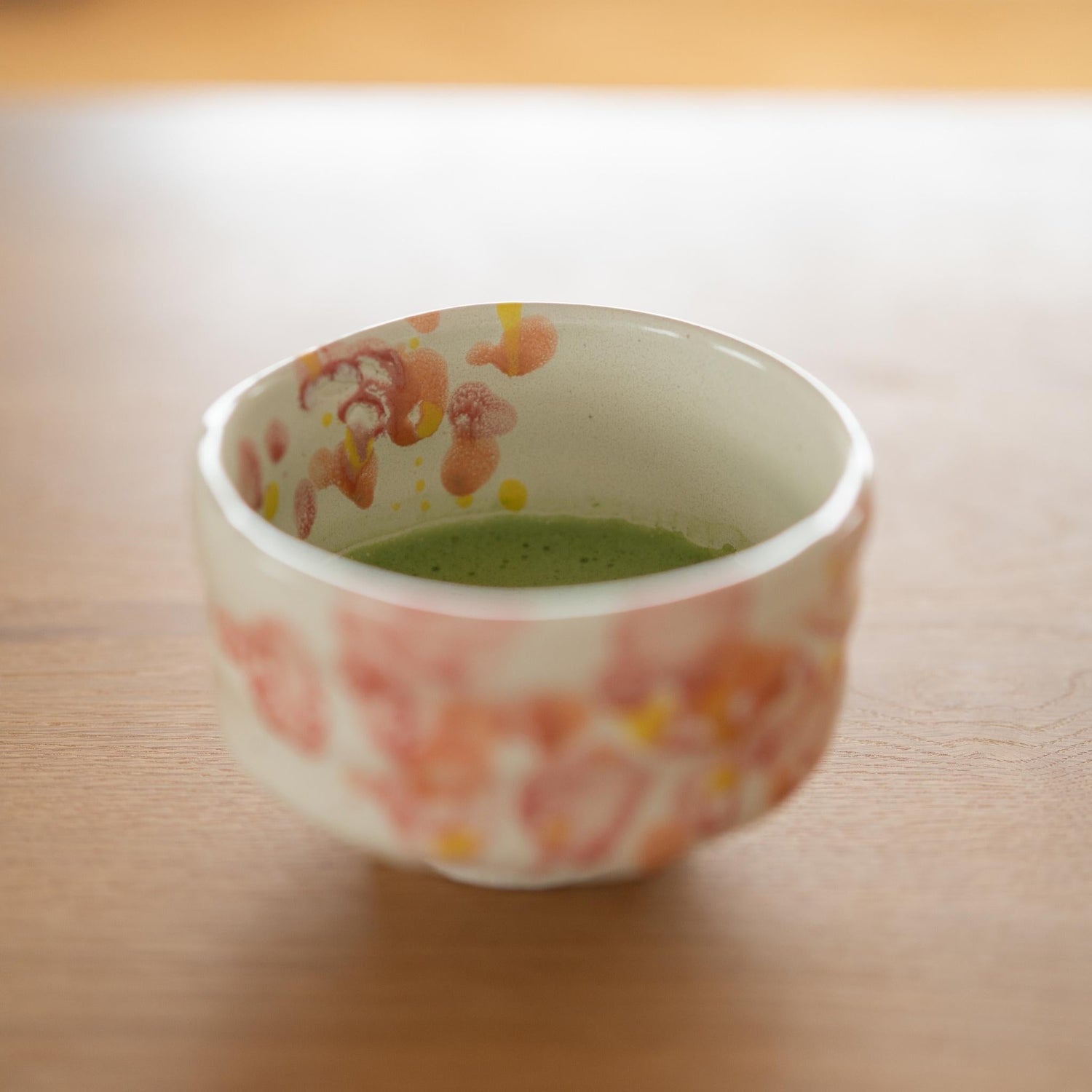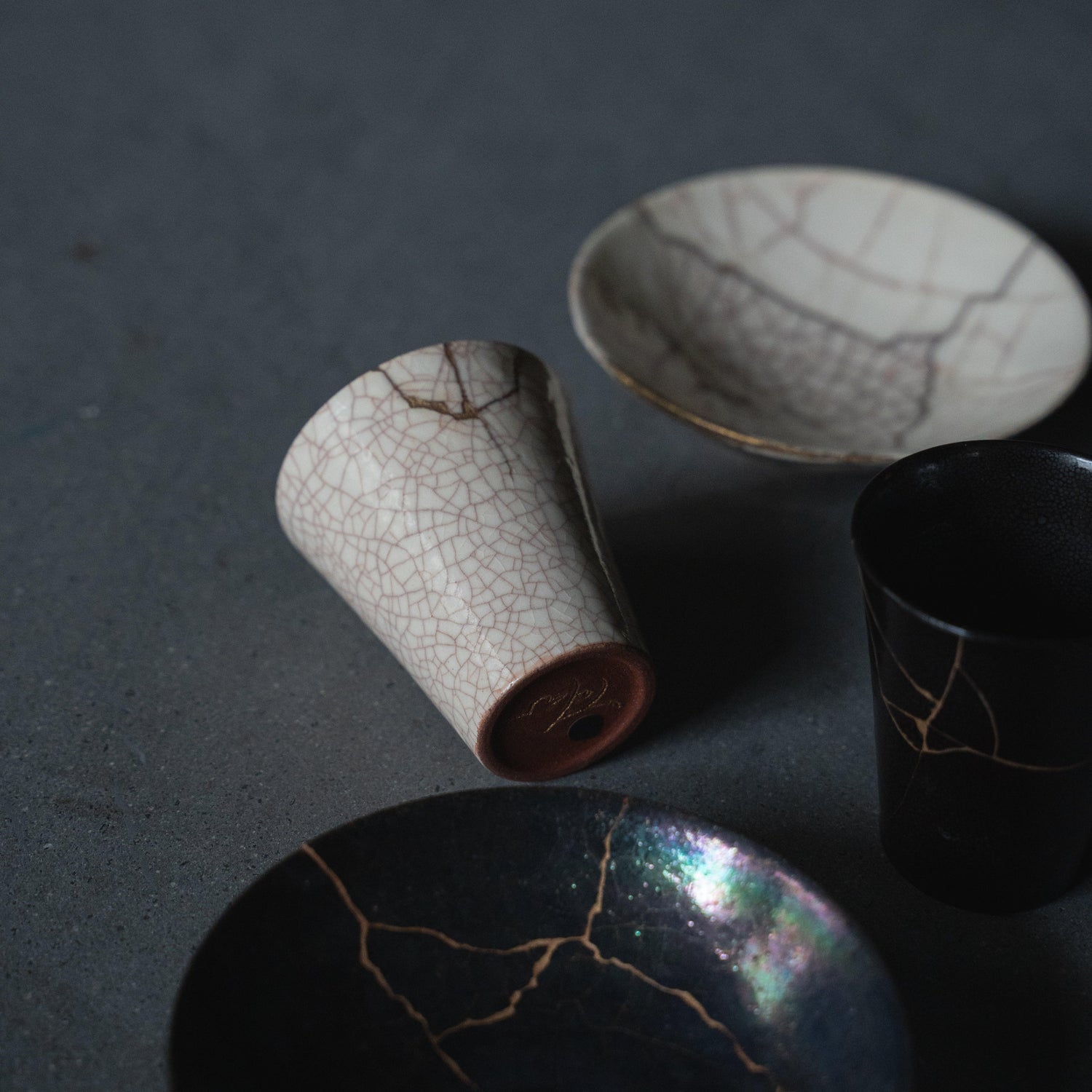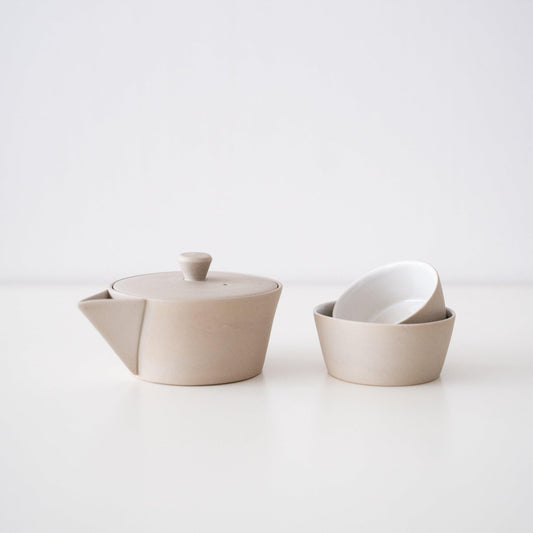
Japanese Tea House (Chashitsu): Zen Design & Where to Visit
Share
A place to escape the hustle and bustle of modern life and regain the silence of the heart—that is the "Japanese tea house" (chashitsu). This space can be described as a sanctuary of mindfulness, condensing centuries of Zen wisdom. In this article, we will unravel its profound history, the secrets of its design, and the world-renowned locations where you can actually experience its spirit.
Table of contents
What is a Japanese Tea House?
A Japanese tea house is not merely a place for drinking tea. It is an apparatus designed to shut out the noise of everyday life and allow one to face oneself amidst silence. Serving as the stage for the "Japanese tea ceremony" (Cha-no-yu), this space is designed based on the spirit of Zen, bringing deep spiritual peace to those who visit.
Here, the philosophy of "Ichi-go Ichi-e" (one time, one meeting) breathes. Social status and titles are left outside the tea house japan, and the host and guest share a fleeting moment that will never return, standing on equal ground. A place of communication where hearts connect through a single serving of matcha—this is the essential role of the chashitsu.
Historically, there are two major styles of tea houses. There is the "Shoin-zukuri," symbolizing the authority of the samurai class, and the "Soan-zukuri," which values the spirituality perfected by Sen no Rikyu. Let us look at these two contrasting styles that shape the image of the "Japanese tea house" we hold today.
Shoin-zukuri (The Formal Style)
This is a prestigious style born from the samurai culture of the Muromachi period. Heavily influenced by Chinese (Tang) culture, it is characterized by spacious rooms and luxurious decorations. Functioning as a venue for official receptions and rituals, the magnificent "tokonoma" (alcove), "chigaidana" (staggered shelves), and "tsukeshoin" (built-in desk) were adorned with expensive imported tea utensils and paintings. It is a "Hare" (extraordinary) space that pursues dignity and formal beauty to demonstrate the host's authority to guests.
Soan-zukuri (The Rustic Style)
This style was perfected by Sen no Rikyu as an antithesis to Shoin-zukuri. Based on the concept of a "mountain dwelling within the city" (shichu no sankyo), it was intentionally built like a humble mountain hut using natural materials such as mud walls, logs, and bamboo. Here resides the spirit of "Wabi-Sabi," which finds beauty in imperfection.
Its greatest feature is its extremely small space, often four and a half tatami mats or less. By stripping away decorations to the absolute limit and shortening the physical distance between host and guest in a dimly lit space, it is designed to deepen spiritual communion. The Japanese tea houses loved around the world today as symbols of mindfulness are primarily of this Soan style.
History and Philosophy of the Japanese Tea Ceremony
The tea culture of the past was one of appreciating luxurious utensils imported from China and enjoying banquets. However, during the Muromachi period, figures like Murata Juko and Takeno Joo rejected such ostentation, advocating the aesthetic of "Wabi"—finding spiritual depth in simplicity. This ideological shift, finding beauty in everyday miscellaneous vessels and humble spaces, became the cornerstone of the highly spiritual "Japanese tea ceremony."
It was Sen no Rikyu who elevated this "Wabi-cha" to the realm of art. He transformed the tea house from a social venue into a place of training for self-reflection. In a grass hut stripped of all excess, one finds spiritual fulfillment and absolute beauty within imperfection. His philosophy continues to be the spiritual pillar of the tea ceremony today.
There is an anecdote that symbolizes Rikyu's aesthetic. One summer, Toyotomi Hideyoshi visited Rikyu's residence, having heard that the morning glories there were magnificent. However, all the morning glories in the garden had been cut down. When Hideyoshi entered the chashitsu suspiciously, there was just a single morning glory arranged in the dim alcove. Discarding the many to condense life into the one. This is the ultimate minimalism taught by the tea house, and the essence of its beauty.
Inside the Japanese Tea Room: Elements of Design
The Japanese tea room is a collection of precise designs calculated to balance psychological tension and harmony between the host and guest. At first glance, it looks like a simple hut, but various mechanisms are in place to guide guests from the "ordinary" to the "extraordinary." Here, we explain the major elements that constitute a Soan tea house and the spiritual meanings they hold.
Roji (The Garden Path)
The garden path leading to the tea house, known as "Roji," is a boundary (barrier) separating the secular world (ordinary) from the sanctuary (tea house). Guests walk carefully on stepping stones, gazing at the moss and trees to compose their minds. Just before entering the tea house, they cleanse their hands and mouth at the "Tsukubai" (stone washbasin). The sensation of this cold water washes away social titles and worries, preparing them to enter the room as a pure human being.
Nijiriguchi (The Crawling Entrance)
One of the most unique features of the chashitsu is the "Nijiriguchi," a small entrance only about 60-70cm in height and width. To pass through here, everyone must lower their head, kneel, and crawl in, making themselves small. Even samurai of the past had to leave their swords outside to enter. This physical action quietly but strongly impresses upon the guest the spirit that "everyone is equal inside the tea house."
Tokonoma & Tatami
Upon entering, the guest's gaze is naturally guided to the "Tokonoma" (alcove). This is the spiritual center of the tea house, where a hanging scroll or a single flower, selected by the host to match the guest, season, and weather of the day, is displayed. Additionally, in many Soan tea houses, delicate consideration is shown to express respect for the guest by making the ceiling above the guest's seat higher than that of the "Temae-za" (host's seat), even within the narrow space.
Ro and Mizuya (Hearth and Preparation Area)
In the center of the tea house, a "Ro" (sunken hearth) is cut into the floor in winter to boil water, while a "Furo" (portable brazier) is placed in summer to keep the fire away from the guests. This is the host's consideration to ensure the guests spend their time comfortably.
On the other hand, the "Mizuya," where preparation and cleanup take place, is placed out of the guest's sight. Showing only beautiful movements and a completed space while thoroughly hiding the backstage work—this, too, is a refined aesthetic designed not to disturb the guest's mind.
Bringing the Japanese Tea House Aesthetic Home
Even without building a full-scale tea house, you can experience its silence and the spirit of "Wabi-Sabi" at home. The essence of the tea ceremony lies not in the building itself, but in the quality of "time" and "space" spent facing the tea and composing one's mind.
Try incorporating authentic matcha bowls handcrafted by artisans or sophisticated tea vessels into your daily life. The moment you carefully brew tea with beautiful tools, even at your usual dining table, the spirit of the tea house resides there. Here, we introduce tools to create a small "sanctuary" in your home.
Matcha Bowl
The matcha bowl, the only tool passed directly from hand to hand between host and guest, is also a tool of communication. The warmth of the clay and the scenery of the glaze act as a switch to focus on the "here and now."
Japanese Matcha Bowl “Yuzu Black”
This is a piece overflowing with a sense of profound weight, created by "Shinzan Kiln," a Mino ware pottery with a history of over 150 years. As the name suggests, it features a unique stippled texture called "Yuzu-hada" (citron skin) that resembles the skin of a yuzu fruit, providing pleasant stimulation to the fingertips. The rough, rustic texture of the Shino clay and the reddish-brown tones peeking out from beneath the jet-black glaze embody the imperfect beauty of "Wabi-Sabi."
The greatest appeal of this matcha bowl is the contrast created by its deep black color. The vibrant emerald green of the whisked matcha stands out against the black background, making one feel a deep silence visually as well. Its substantial stability and weight that fits comfortably in the hand will bring dignity and calm to your daily tea ritual.
Japanese Matcha Bowl “Flower”
This is a gorgeous matcha bowl that evokes the arrival of spring, also by the artisans of Shinzan Kiln. Based on the soft touch of Shino clay, it uses a special technique of scattering red, orange, and yellow glazes to express dancing petals. While it has a traditional shape, no two expressions are alike, making it truly a one-of-a-kind work of art.
Its generous size makes it easy to whisk matcha, making it recommended for beginners as well. When not in use, simply displaying it as an interior accent adds the warmth of craftsmanship and the colors of nature to your space. It is a unique matcha bowl that allows you to feel the quiet spirituality of the tea house and the bright energy of spring simultaneously.
Japanese Matcha Bowl “Waraku” Moon
This is a white porcelain matcha bowl with a delicate and gentle touch by Kumiko Tachi of Buzan Kiln, a female Mino ware artist. The delicate "Sogi" (carved) pattern inspired by a tea whisk (chasen) and the elegant gold rim blend beautifully with modern interiors and Japandi styles. Its lightness of about 190g and form that fits in the hand give peace to the user.
The true joy of this vessel lies in the hand-painted "autumn fruit and moon" motif hidden on the kodai (bottom of the bowl). The small surprise that appears after drinking brings playfulness and joy to the daily ritual. It comes with a special hand-painted paulownia box and a beautiful shifuku (silk pouch), making it an ideal piece as a gift for a loved one or a treat for yourself.
Japanese Tea Set
A Japanese tea set designed for enjoying Sencha and Gyokuro, not just matcha, is also a crucial element that embodies the spirit of the tea house. Each quiet gesture of pouring tea from a teapot into a teacup acts as a reset button for a busy mind. Tea vessels that have perfected functional beauty not only maximize the flavor of the tea but also beautifully transform the demeanor of the person using them.
Japanese Teapot & Yunomi Set
This is a modern Japanese tea set by the Mino ware pottery "Shinzan Kiln," which won the prestigious Red Dot Design Award (2020). As the name "Frustum" implies, it features an elegant geometric conical form, achieving both visual beauty and comfort when held. The 1300-year history of Mino ware technology has been sublimated into a stylish design that blends seamlessly into modern living spaces.
The set includes a large capacity 800ml teapot and two teacups, making it perfect for sharing quiet time with a partner or friend. The rim of the teacup flares gently outward, calculated to allow you to enjoy the rich aroma of the Japanese tea more deeply. Coming in a beautiful gift box, it is perfect as a gift for a loved one or as an item to elevate your tea time at home.
Japanese Nested Tea Set (Teapot and Teacups)
This is a Japanese tea set with a "nesting" (Ireko) structure where the teacups fit perfectly inside the teapot, created by "Nankei Pottery," a Banko ware kiln in Yokkaichi City, Mie Prefecture. The inside of the teapot is finished with a "Yakishime" (unglazed) technique, which moderately softens the astringency of the tea leaves and draws out a mellow, deep flavor. It is particularly suitable for teas extracted slowly at low temperatures, such as Gyokuro and Sencha.
The appeal of this set lies in its portability and minimalism. You can take it to your favorite spot, such as a park bench or balcony, and enjoy an impromptu "Nodate" (open-air tea ceremony) under the blue sky. The small 120ml teapot is just the right size for carefully brewing tea for one. It is a heart-enriching tool that allows you to create your own small tea house in a fleeting moment of daily life.
Japanese Hohin Tea Set for Four
A "Hohin" is a teapot without a handle. This set is designed so that four teacups can be stored inside the Hohin like nesting dolls. Thanks to this stacking function made possible by the craftsmanship of Shinzan Kiln, it can be stored and carried compactly in a way unimaginable for a tea set for four people.
Because it has no handle, you can brew tea while directly feeling the appropriate temperature (around 60-70 degrees Celsius) with your hand, making it suitable for drawing out the delicate umami of Gyokuro and high-grade Sencha. Enjoying tea with family and friends outdoors while feeling the breeze—this refined Mino ware Japanese tea set makes such luxurious time come true. It is a beautiful piece where the spirit of "Wabi-Sabi" meets modern functionality.
Where to Experience Authentic Japanese Tea Houses
To truly understand the spirituality of the tea house, it is best to actually place yourself in that space. Why not go on a journey to visit authentic tea houses not only in Japan but around the world, and feel the silence, scent, and light with your own skin?
Must-Visit Tea Houses in Japan
In Japan, the birthplace of the tea house, you can experience National Treasure-class tea houses not as museum exhibits, but as living architectural heritage.
Tai-an (待庵)
"Tai-an," located at Myoki-an Temple in Kyoto, is a National Treasure said to be the only existing tea house designed by the Tea Master Sen no Rikyu. Its size is only two tatami mats (about 3.6 square meters). It is the origin of Rikyu's "Soan" style, which rejected the then-mainstream luxurious "Shoin-zukuri" and sought to find an infinite universe within ultimate smallness.
What should be noted are the details of the walls and windows. Rustic materials are used, such as "Shitaji-mado" windows where the mud wall is intentionally left unplastered to show the underlying reeds, and "Kokerabuki" roofing made of thinly sliced wooden shingles. The Japanese spirit of "Wabi"—finding beauty in the natural state of materials that are not perfect—is condensed in this microscopic space.
Yuin (又隠)
"Yuin" is a tea house built by Sen no Sotan, the grandson of Rikyu, and is a famous seat representing the Urasenke school. It faithfully reproduces the "four and a half tatami" size loved by Rikyu, and boasts such a good balance that it can be called the "completed form" of the Soan tea house, with many modern Japanese tea houses said to be modeled after this Yuin.
The characteristic of this tea house lies in the fusion of beauty and functionality. The ceiling features a wickerwork ceiling made of woven "hegi-ita" (thin strips of wood), and uses the "Kesho-yaneura" technique that intentionally exposes the roof structure. Also, on the wall of the "Temae-za" (where tea is prepared), a "Doko" (shelf) is embedded to efficiently store utensils, allowing one to feel Sotan's detailed consideration and the beauty hidden within practicality.
Jo-an (如庵)
This is a National Treasure tea house built by Oda Urakusai, the younger brother of Oda Nobunaga and known as a daimyo tea master. It is currently relocated to Urakuen in Inuyama City, Aichi Prefecture. Unlike Rikyu's stoic tea house, one can see bold touches typical of a warrior background and playfulness resembling modern graphic design throughout.
The most unique feature is the design where old calendars are pasted on the "Koshi-bari" (lower wall papering). This is a very modern sense of recycling calendars of the time to enjoy as a pattern. Also, "Uraku-mado" windows, made by packing bamboo tightly together, are installed to dramatically control the light from outside. It is also equipped with a "Katana-kake" (sword rack) for placing swords, making it a precious place where you can experience the unique aesthetic of the tea house japan loved by samurai.
Japanese Tea Houses in the USA
Even if you cannot find time to go to Japan, authentic Japanese tea houses exist within the United States. These are "real tea houses" built by Japanese Living National Treasure-level artisans or that have crossed the ocean due to historical circumstances.
Shofuso Japanese House and Garden (松風荘)
"Shofuso," nestled in Fairmount Park in Philadelphia, Pennsylvania, is hailed as one of the greatest masterpieces of Japanese architecture in North America. Its origin is unique; it was designed by the renowned architect Junzo Yoshimura and built in Nagoya in 1953 for exhibition in the courtyard of the Museum of Modern Art (MoMA) in New York, before being relocated.
Here, a Shoin-zukuri main house is equipped with an authentic tea house, allowing you to see the fusion of traditional Japanese craftsmanship and post-war modernist architecture. If you participate in a tea ceremony demonstration held regularly while gazing at the beautiful pond-strolling garden, you will be immersed in silence and the Japanese aesthetic (tea house japan spirit) so deep you will forget you are in Philadelphia.
Seifu-an at The Huntington (清風庵)
In the vast Japanese garden at The Huntington Library in San Marino, near Los Angeles, stands a tea house called "Seifu-an." Built in Kyoto in the 1960s and donated by the Pasadena Buddhist Temple, this tea house has a rare history: it "returned home" to Japan once in the 2010s to be restored by Kyoto temple carpenters before being rebuilt on Californian soil.
This tea house, possessing an authentic Kyoto-style Soan design, harmonizes perfectly with the surrounding Japanese garden landscape. While usually only the exterior is open for viewing, during specific events, tea ceremony demonstrations are held, allowing you to see it in actual use. It is a precious place where you can feel Kyoto's traditional techniques and the essence of Japanese tea houses under the blue sky of California.
Asian Art Museum Tea House
In the second-floor gallery of the Asian Art Museum in San Francisco, a tea house itself is displayed as a work of art. This was created by "Nakamura Sotoji Komuten," a prestigious Kyoto sukiya architecture firm, and constructed using traditional joinery techniques without a single nail.
Unlike outdoor tea houses, its greatest feature is that it is installed inside the museum, allowing you to observe the architectural details at close range without worrying about the weather. You can carefully appreciate the details of tea house japan that can usually only be seen from a distance, such as the exquisite bamboo work on the ceiling and the arrangement of the alcove. For those interested in architecture and design, there is no better place to learn.
Japanese Tea Houses in the UK
Interest in Japanese culture runs deep in the UK, with wonderful Japanese tea houses dotted from central London to the nature of Scotland. Here, we introduce three unique spots that fuse with British history and climate.
The British Museum
Stepping into the Mitsubishi Corporation Japanese Galleries (Room 92-94) at the British Museum in central London, an authentic Japanese tea house appears. Donated by the Urasenke school in Kyoto, this is a "building within a building" intentionally constructed inside the museum's exhibition room. The contrast of traditional wooden architecture suddenly appearing inside a modern museum leaves a strong impression on visitors.
Carefully selected tea utensils and hanging scrolls are also displayed around the tea house, allowing visitors to learn about the comprehensive culture of tea house japan. Tea ceremony demonstrations by the Urasenke UK branch are also held regularly, making it a spot of high cultural value where you can feel the breath of "living" tea ceremony through the glass while staying in London.
The Japanese Garden at Cowden
In the quiet nature near Dollar, Scotland, lies a historic garden called "Sha Raku En." This garden, created in 1908 by the female adventurer Ella Christie who invited the gardener Takio Handa from Kyoto, is known as one of the most important Japanese gardens in the UK, with a beautiful tea house standing at its center.
After a long period of closure, extensive restoration work was carried out in recent years, and the tea house was rebuilt to its former glory. Its figure standing by the pond represents a magnificent fusion of the surrounding Scottish landscape and Japanese aesthetics. Time spent strolling through the quiet garden and gazing at the tea house will make you forget the hustle and bustle of daily life and bring you the spiritual peace unique to Japanese tea houses.
Tatton Park
Tatton Park, near Manchester, is home to one of the most beautiful Japanese gardens in the UK. Inspired by the Japan-British Exhibition of 1910, this garden has a history of over 100 years and is a precious heritage that conveys the craze and yearning for "Japonisme" in Britain at that time to the present day.
Within the stroll garden influenced by Shinto, a quaint tea house is situated along with an iconic red bridge and torii gate. Although entry inside the tea house is usually restricted, viewing the exterior of the tea house japan harmonized with the seasonal plants is valuable in itself. Why not turn your thoughts to the "Oriental mystery" loved by British aristocracy of the past?
The Japanese tea house is not a relic of the past, but a timeless place that reminds modern people of the "silence" they have forgotten. A journey to visit National Treasures in Kyoto, or creating a small sanctuary at home with your favorite bowl—either is a wonderful first step. Why not open the door of the tea house and incorporate the heart-easing time of "Ichi-go Ichi-e" into your daily life?



















































